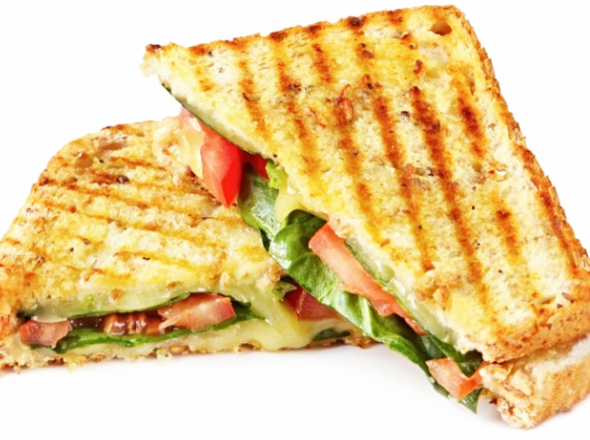Mama’s Punjabi Recipes: Bharre Hue Toast (Toast Sandwich)
Indians love to nibble and crave snacks that are just as spicy and crispy as the dishes that they regularly eat, but with a slight twist. This is what makes snacks like pakore (fried fritters), samosas (fried stuffed dumplings) and potato cutlets such sought after appetizers.
But there is a category of mini-meals that is in-between a snack and lunch or dinner; and sometimes, these become the whole meal by itself. These can be as common as pani-puri (water puff balls), chaats (fried bread mixes) or dahi vada. But these require a lot of ingredients and preparation to come out right and be truly appreciated.
On the other hand, since Punjabi food is cooked in large enough quantities for a meal or two, there are usually plenty of leftovers which can come in handy a day or two later, especially if these are vegetarian dishes. It is not uncommon to find an Indian fridge stacked with leftover dishes just waiting to be re-heated.
This particular recipe takes the dry leftover dishes – those without curries – and two pieces of ordinary bread to make a mini-meal that is easy and fast to make and just as delicious as the original setting. In fact, when they are made a little crispy on the edges, these toasted sandwiches will leave you craving for more.
What makes this mini-meal possible is a hinged sandwich maker which can hold two pieces of bread. The manual type (about $3 in India) are the best, since you can cook them over a gas or electric stove; but there are more sophisticated electric ones (costing $15 in India) which require very little supervision.
These used to be my children’s favorites when they were little, but even now they enjoy them; they taste best when served hot and with a little chutney or ketchup. These are so popular in New Delhi that they are even served by street vendors, with your choice of vegetables!
Ingredients:
Leftover sabzi (cooked vegetables)
2 slices bread – preferably white, sandwich
2 tsp vegetable oil for coating toaster
Directions:
1. Open the toaster and coat each side with some vegetable oil so that the bread won’t stick. You won’t need the oil with some newer toasters which are Teflon coated, but use it anyway as the oil helps the bread to get crispier around the edges when toasted.
2. Place a slice of bread on each side, making sure it is firmly inside the rim of the toaster so it won’t burn.
3. Scoop in two or three tablespoons of cooked leftover vegetables, just enough so that bread won’t tear open.
4. Carefully close the toaster and then place over the gas or electric stove. If it is an electric toaster, simply close it and turn it on.
5. After 2 minutes, flip the toaster over so that the other side will get done. After 2 minutes, flip over again and open to check if the toast is slightly brown; if not, then repeat toasting each side. Be careful that they do not become dark brown.
6. Take them out and are serve hot with some tomato ketchup or chutney.
MAMA’S TIP OF THE WEEK
TURN DAYS-OLD VEGGIES AND DAALS INTO TASTY FRESH PARANTHAS
Depending on your point of view, one of the best parts of Indian food is that there are plenty of leftovers; though there are enough finicky people who swear they only eat fresh and won’t even look at day-old food left in the fridge! Some foods just taste much better when they have been left for a day; like rajma (red kidney beans); bhartha (grilled eggplants), manh chole di daal (urad and channa lentils) or chole (chickpeas).
But when the leftovers are two or three days old, and you want to freshen them up, try rolling them into some atta (wheat flour dough) and making stuffed paranthas (skillet fried bread). They taste really great and can be eaten with acchars (pickles), dahi (yogurt) or other curries for a satisfying meal in themselves.
Shakuntla Malhotra is a skilled cook of Punjabi dishes made in the old-fashioned style that she learnt as a young woman in her ancestral home in Lyallpur, India before it became part of Pakistan after the Partition in 1947. People have often admired her cooking for its simplicity and taste that comes with each mouthful. Even in her mid-eighties, she continues to cook daily and agreed to share some of her delectable Punjabi recipes.


